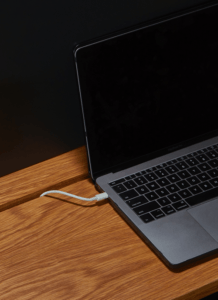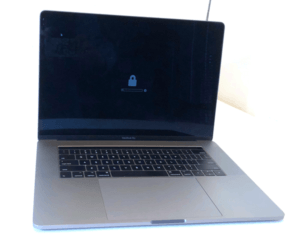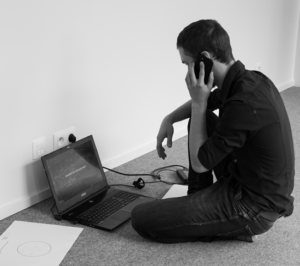When Laptop is Beyond Repair?
 Pixabay
PixabaySometimes, we want to know if taking our faulty laptop for repair is worth it or if it would be wiser just to get rid of it and buy a new one. Here are few things to note and then infer if your laptop is beyond the saving grace of a technician.
The laptop’s power goes down very fast
If you discover that your laptop battery drains faster than usual, you should first check if it is an adapter issue, power supply, or battery issue. If none of the above mentioned is responsible for your laptop’s power-draining faster than usual, you should consult computer technicians and also start preparing for a new laptop.
Laptop’s performance is too slow
When your computer boots up slowly or gives you signals to boot into safe mode, then your hard drive is most likely the culprit as it might have developed issues or maybe when you are in the middle of a task or when using an application, everything goes blank, and the dreaded blue screen appears, it is most likely a software issue. However, in some instances, this could spell the end for your system.
Limited Random access memory (RAM)
RAM of a computer is what allows for the running of programs. However, it can be overworked or overused when many programs are run at the same time. An ailing RAM or overworked RAM causes programs to crash midway or causes them not to start at all. One crucial step is to upgrade the RAM to prevent further damage. Nevertheless, when the blue screen of death shows up, then that is a severe issue.
Laptop crashes and refuses to Boot
This usually signifies that something is wrong with the motherboard of the laptop. If a blue screen is being projected on your screen or you discover some hardware such as the speaker, mouse, and so on is not working, then you have a central processing unit problem at hand. Taking the laptop to a repairer would be the next piece of advice. However, if it turns out to be accurate, that the motherboard is faulty, you either get a new motherboard or start planning on getting a new laptop.
Hardware Function Failure
If you discover that certain hardware on your laptop is faulty and other parts to follow suit in developing fault and to make matters worse, the problems persist after fixing them, then you should start budgeting for a new laptop because most times the difference in the cost required to fix the laptop and the cost needed to get a new one is small. If you still have a warranty on the laptop, good for you. If not, start budgeting.
Lastly, having checked the extent of the fault or damage your system has incurred. It is up to you at the end to still weigh the cost of repairs as against getting a new laptop. Furthermore, consider the prospects of the laptop and make your decision.
Common Issues with Laptops You Can Fix Yourself Image from Pixabay
Image from PixabayWhen it comes to a computer or a system, they are possibilities that they might come up with some problems as time goes on.
Unfortunately computers are like human bodies; the older they get, the more the are prone to sicknesses. When they are used over time, they tend to start coming up with different issues.
What would you do if you tried to use your laptop and found out that it is not coming on at all? Not to worry, sometimes the issue might be so simple, such that you could even fix it yourself. Here, we will show you how to identify the problem and then what to do once you have identified the problem.
Diagnosis
The first thing to do whenever your laptop develops a fault is to diagnose the problem. Try to know what the cause of the problem is. In this case that the laptop is not coming on, you can try to ascertain the cause of the problem by checking it. There are two basic things you should check before anything else, and that is the battery of the laptop and the battery charger.
Battery
The battery might be the cause for the laptop not turning on. Maybe the battery is bad, and all you need to do is to get a new battery, and your laptop will start working correctly. There is a simple approach to check and know if it is your battery that is the cause of the laptop not coming on.
You can take battery out of the laptop, then you hold the power button for about 30 seconds to 1 minute, then you plug the charger back into the laptop without putting the battery back in the laptop. If the laptop comes on it, then it means that your battery is bad, but if it does not come on, then it means you need to check your laptop charger. If the battery is bad make sure to dispose of it properly. Never toss it in the garbage because it's toxic to the environment.
Charger
The charger might be the cause of the problem, and this is how you can check to find out. You can take out the laptop charger and the battery of the laptop. After you have removed battery and charger, hold the On and Off button of the laptop for about 30 seconds to 1 minute, then you place the battery back into the laptop without plugging the charger back into the laptop. If the laptop comes on, it means that your charger is bad, but if it does not come on, then it means you need to check your hardware.
Faulty Hardware
Once it gets to this stage, there is very little you can do, especially when you lack the knowledge of computer engineering. Here the problem could either come from the processor or the motherboard. Where this is the case, computer repair technician would be the right person to handle it from here. You can sell laptop in case if it's broken beyond repair and buy a new one and move on.
Laptop Doesn’t Fully Charge: What to Do?

Photo from Unsplash
Your laptop not charging fully should raise a concern that something is going wrong. From declining battery health to charger problems, to update issues, the list of potential causes is growing. Below are a few tips that you can try out when you notice your laptop is not charging fully.
Run a battery troubleshoot:
If you notice your battery is not charging fully, the first thing to do is to troubleshoot to check and solve the problem after completing the process check if the problem is resolved.
Inspect your charger to see if it is connected corrected to a power source:
You should ensure your laptop’s power cable is connected correctly to a power source. Also, check for power surges from the supply.
Try another Charger:
Your charger might be the reason for your laptop not charging fully. Try another charger compatible with your laptop and watch if there is any difference.
Disconnect all external devices:
Unplug external devices such as a mouse, external keyboards, smartphones, etc., to ensure the laptop is not losing power to external devices while charging.
Search for BIOS update:
Your laptop might require an update for components such as your BIOS. Updates can help remove the bugs that might be responsible for your laptop, not charging as it is meant to be.
Hold down the Power Button:
Sometimes, unknown issues can prevent the battery from charging. A simple way to fix this is to power off your PC, hold down the power button until your laptop goes off, plug in your charger, then restart the computer.
Check your battery usage using the Task Manager:
Open the Task Manager to check for applications that are using the battery more and close them until your laptop is fully charged. Also, you can check your laptop’s settings and search for background apps. Some of these apps utilize quite a lot of power and could be responsible for your laptop, not charging efficiently. Therefore, closing them should be the next action.
Replace the laptop’s battery:
Finally, if you do not notice any improvements after trying all the above. You should check your laptop’s battery to confirm if it is faulty, as this may be the case. Therefore, if you are not comfortable with managing your battery the way it is, getting a new battery might be the solution to this kind of problem
.5 Reasons Your Laptop Won’t Turn On. And How To Fix It
You pressed the power button and your laptop is not turning on or it came on and went off immediately. Perhaps it blinked or the monitor won’t display and image? Well, there is no need to get worked up yet and start searching where to sell your laptop online. This is a problem most pc users have encountered one way or the other and below are some reasons that can cause your computer not to come also are the possible solution to each cause. Let’s bring your computer on.
Story at glance:
Common issues with laptops that are not turning on. How to quickly diagnose them at home.
Assessing repair cost based on the issue type. Making decision whether to fix or sale broken laptop and purchase a new one.
If the laptop is broken beyond repair or the cost is too high it needs to be safely recycled. Best ways to recycle electronics.
Also find out the following:
Should You Fix Your Laptop or Buy a New One?
and
How To Safely Recycle Your Laptop
1.Power issues
After pressing the power button and the system does not come on, the first thing to do is to check if the power plug is well connected to your computer. Also, if your laptop is not connected to a power source, confirm it is not coming on as a result of a low battery. If you have checked and you are not guilty of any of the above. Next on the list is to inspect your power source to confirm if there is power there. Also, check the computer’s power plug or adapter for any sign of damage or burning as this can result from power surges. If it happens to have been damaged you might be needing a new power plug or adapter.
2. Monitor/display issues
If your pc has power, that is, after pressing the power button the power lights come on and the fan begins to rotate then, your monitor might be having some issues which varies from whether your monitor is properly connected to a power source and other parts of the computer. You can try connecting your computer to another monitor or a TV using an HDMI cord. This is to test if your monitor is damaged or the fault is coming from your computer.
For laptops, it could be that your laptop display is in a sleep mode and is finding it hard to come up. At this stage, try to shut down your laptop completely by holding down the power button until your pc goes off then press the power button again to restart your pc. This should do or continue scrolling down.
3. Internal component issues
There is a probability that a hardware component of your computer has become loose and is in need of tightening. But, before you take this bold step, ensure you have the required knowledge or expertise or you might end up damaging your computer further. To start, you open your computer and remove the panels and search for any loose component. You can remove the components such as RAM, hard drive, graphics card etc. and fix them back. Then, reboot your computer.
4. External devices
Check if you have external hardware such as external hard drive, keyboard, camera etc. as they can be the responsible for your computer refusing to boot.
5. Booting issues
If a blue screen appears with booting options, go through the instruction on the screen and choose a suitable booting option.
Open the BIOS: If you are still having difficulty getting your computer to start and a POST screen appears bearing with an error message, then some settings on your computer might be responsible for the glitch. You can access the BIOS from the POST screen by pressing F2 or other related keys to access the setup. Here, you can try to change your BIOS settings. If it doesn’t work go back to the previous setting.
If above tips don't help you will face a dilemma: shoudl you invest in a repair or sell it and buy a new one.
Should You Fix Your Laptop or Buy a New One?

Image from Pixabay
If your computer is more than a couple of years old, and it stops working, you are facing one of the most common questions in computer repair, “Should I fix it, or just buy a new one?”
As many computer models have become less and less expensive, it can be tempting to throw in the towel immediately and buy a new one. For higher-end models whose replacement costs are higher, some owners might be led to spend far too much money trying to keep an older machine running. Before you decide on what to do with that broken machine, let us look at some factors to consider.
How Bad is the Problem?
Sometimes you don’t need to be a diagnostician to understand how bad the issue is with your computer. Broken displays, a malware infestation, or a can of soda inside the CPU can often give you a good idea of what a repair will cost. A little online research or a trip to a trusted repair shop can usually give you a decent idea of how big the problem is, what it might cost to fix, and how long it will take.
How Old Is It?
Different computers have various different lifespans. The typical length of service for a computer depends on several factors, including the quality of equipment when new. For instance, more expensive gaming laptops and “business class” machines tend to last a couple of years longer than consumer grade models. Typical usage can also impact the lifespan of a computer. Heavy usage or the strain of daily travel can lead to a shorter serviceable life for a machine.
You certainly don’t want to invest in a pricey repair on a machine that is at the end of its usable life. For computers between brand-new and end of life, a little math may be helpful in your decision. If you bought at $1000 computer and expect it to last five years, it’s value would, in theory, drop by $200 every year. In reality, it loses much more value in the first year, but this gives you some idea of the value of the machine when you are spending money for a repair so you can compare that to the estimated repair cost. However, don’t make that decision yet. There are some other costs you need to think about.
What is the Total Cost of Each Option?
Be aware, you may be missing something if you only consider the actual cost of the repair vs. the price of a replacement. There are some possible expenses to add to the cost of a new machine. Software is the most common unexpected expense. Users often lose track of activation codes for the programs they use, meaning that they can’t simply install them again on a new machine. You will also need to factor in the expense of your time setting up your computer with all your software, preferences, and passwords.
On the other hand, there may be some hidden expenses in keeping the machine that you have. Having it repaired now doesn’t guarantee that another issue won’t creep up down the line. Also, if your current computer is starting to become slow, consider the time and productivity you are losing compared to a brand new machine. This could mean that recycling your laptop is your best bet.
How To Safely Recycle Your Laptop
Every few years it comes time to get rid of your old, outdated laptop and upgrade to a newer model. Maybe you’re the type who loves having the newest gadgets, or maybe your trusted old laptop is on its last legs; either way, you never want to throw away an old laptop.
Recycling your laptop saves a massive amount of energy and resources that can be used to create newer products. It also has the added benefit of preventing toxic materials in your laptop from harming the environment by sitting in a landfill. Most electronics contains toxic chemicals such as lead that can be harmful to our bodies, so proper disposal of laptops is essential.
Before you get rid of your old laptop you need to clear it of your personal information. When disposing or recycling technology that contains your confidential data you have to be sure to completely remove any sensitive information.
How To Reset Your Laptop
Back up your data.
The first thing you’ll need to do is back up the data on your laptop to your new laptop computer. This can be done via a physical backup hard drive or onto cloud services. Backing up your data is an easy way to transfer all of your information to your new computer without having to worry about manually re-entering in all of your information.
De-authorize everything.
For products such as iTunes that limit the number of devices that can access them, you’ll need to deauthorize your old laptop before recycling it. While you can select “Deauthorize All Devices”, this can only be done once a year. To deauthorize iTunes on your laptop, open up the application, click on “Account” and then select “Deauthorize This Computer”.
Wipe it completely.
Both Windows and Apple laptops have options for completely resetting and restoring your computer. Make sure to completely follow the reset instructions on your computer to ensure that none of your personal data remains on the laptop once you recycle it.
Where To Recycle Your Laptop
If your laptop is less than five years old, then you can put it to good use by donating it to a local nonprofit or library for refurbishing. Microsoft’s Registered Refurbisher directory can help you find a program.
If your computer is too outdated or out of shape to refurbish, then there are several places where you can recycle it. One place where you can recycle your laptop is Dell’s Goodwill Reconnect Program, which accepts old and broken hardware.
Another is Best Buy, which offers what they claim to be the most comprehensive appliance and electronics recycling program in the United States. Best Buy claims to collect more than 400 pounds of product for recycling every minute their store is open. You can get rid of your laptop at one of their recycling kiosks or in store at the Customer Service counter. If they can’t refurbish or resell your laptop, they will ensure that it is responsibly recycled. Yet the best way to actually get cash for you laptop is to sell it to reputable electronics recyclers like SellBroke.
With infinite displays, and folding screens, who knows what smartphones will look like 5 years from now?
How To Fix a Laptop Freeze

A laptop freeze can be frustrating and at the same time indicate that something is wrong with your laptop. It can be caused by various factors and it is important to know the actual reason why laptop won't turn on. Knowing the reason helps to find a good and lasting solution. Generally, the first line of action is to wait for your laptop to unfreeze before embarking on the task to prevent any future issues. Below are some causes of laptop freeze and their likely solutions. And if that won't help you can sell laptop for parts and buy a new one.
Causes and solutions to laptop freeze
Running too many programs at the same time and insufficient RAM:
This takes a toll on the software and the hardware component of your laptop thereby making available little or no memory to run these programs. Also, if the programs being run are too much for the memory of the laptop, then a freeze is inevitable. A simple solution to this is to close as many programs as possible using the task manager. Right-click Task manager and then find processes and end as many programs as possible by clicking end task. Solutions to the RAM issue are;
Reduce RAM’s workload.
Upgrade laptop memory to accommodate more work or get a new laptop with more RAM if needed.
Overheating:
This can cause a laptop to freeze and can go as far as damaging the integrated circuit of your laptop. This can occur as a result of excess heat coming from the laptop or an external environment with high temperature. The possible solution to this is to ensure that the laptop’s fan is clean and working properly and the laptop itself is well ventilated. In other words, the laptop’s temperature should be properly controlled.
Computer viruses:
They could be the cause for a laptop’s freeze and can go on to prove deadly by further harming the health of your laptop. You should scan your laptop regularly for viruses while using a reliable antivirus.
Little or no space on your hard drive:
If your laptop’s storage is running out of space, it is important to declutter your storage (hard drive) by moving or deleting files from your hard drive or backing up some files and free up more space from your laptop.
Outdated or corrupted drivers:
Drivers serve as the connection between the operating system and hard drives as they ensure communication between the OS and the hardware. Corrupted, damaged or outdated drivers cause computers to freeze. Therefore, your next line of action is to update all device drivers to their latest update.
Defective external devices:
Attaching a faulty external device such as an external mouse or keyboard or a USB cord can cause a laptop freeze. The solution to this problem speaks for itself, do not connect faulty or damaged to your laptop. Also, the problem might arise as a result of the absence of a driver which can be updated.
Faulty software/ software error:
Some software especially third-party software could be the source of your laptop freeze. This can be a result of many factors most of which are memory-related. If this is the reason for your laptop freezing, the solution is either to delete the installed software or update it.
Another important solution to solving a laptop freeze is to go through a System restore although it is also important to note that some data are most likely going to get lost while going through this process. Visit a technician if the freeze persists.
A properly maintained laptop should last long regardless the make and model.
How To Fix Windows Update Problem
 Photo by Thomas Dumortier on Unsplash
Photo by Thomas Dumortier on UnsplashOperating system updates are important and can also be daunting if they don't work. Neglecting these updates can make some new functions inaccessible and also make the computer vulnerable to hacker attacks. Therefore, it is important to update your Windows but the update process can sometimes be problematic. Below are few ways to fix common problems that can arise from or during a windows update.
If the windows update is stuck:
Ensure that the update is stuck because an error in judgment can cause more problems for your pc. If you have confirmed it is stuck, it is advisable to give it time and wait until the process is over with
If the computer is taking too much time: The next line of action is to “turn it off and turn it on” again. What this does is that it allows windows to start again from the time before you started the update process. If the update lags or looks stuck you can press the power button down until it shuts down. Then restart the pc. This step is much of a gamble as the OS might encounter more troubles if the windows update was already in progress before the forced shut down or everything comes to normal and you have nothing more to worry about.
Run a troubleshoot of the windows update: Search for the troubleshoot settings and select windows update or if you are using the Windows 7 or 8 OS, go to the old control panel and search for troubleshooting then select fix problems with windows update. This troubleshooting exercise can help solve the update problem once and for all and it may require an internet connection.
Check the windows update and security function: Go to the settings and click on update and security, then click on the windows update. You should see notifications from windows if something is wrong with the update. You can proceed further to the advanced options and view your update history; here you can view the newly installed updates and uninstall them. Consider this some form of troubleshooting. You can then restart the updating process again.
Other possible lines of action are:
Restart window in safe mode
Access the system restore from the control panel and take a time travel to the past before the update.
Scan your pc for viruses: The windows update can and might actually have problems as a result of one or more viruses in your pc. Therefore, it is important to run a full scan using a trusted security software or the windows defender. If you discover a virus, you can remove it using a trusted antivirus. If your system is compromised then you move to the next option which is…
Reset your windows: This third-party means taking your system back to its factory properties without losing your personal files. Also, it is important to note that apps you installed on your windows, that is, third-party apps would be wiped meaning you would have to install them after the reset.
11 Tips to Protect Your Laptop
First you want to protect your laptop from damage

Buying a laptop is one thing; maintaining the laptop is entirely another ball game; furthermore, nobody wants to be walking around with a laptop that has scratches. Therefore, preventing scratches on your laptop is a conscious action, and below are some steps to take to prevent scratches on your laptop's exterior.
1. Cover your laptop with protective case or skin
You can use colorful laptop skins or stickers to protect your laptop exterior. This would also serve as some form of design for your laptop. Furthermore, you can also customize the laptop skins according to your taste.
2. Don't toss your laptop
You should be cautious to prevent your laptop from falling. Apart from causing scratches on the exterior of your laptop, this can also affect the hardware of the laptop, thereby causing more damage. Therefore, it is essential to hold your laptop properly or when placing it on a high platform take, for example, a table, make sure it is not close to the edge of the table.
3. Avoid placing objects on top of your laptop
Placing objects on top of your laptop can cause scratches on the exterior of your laptop and also cause further damage to your laptop's screen. Also, you should avoid eating close to the laptop.
4. Ensure you carry your laptop in a laptop bag
Using random bags with rough interiors can cause scratches on your laptop's exterior. That is why it is essential to use a designated laptop bag to carry the laptop. Additionally, store your laptop in the area explicitly designed for electronic devices in the bag. Avoid placing charges, USB cords, and accessories in the same compartment as they too can scratch the laptop's exterior.
5. Protect your screen with screen guard
Use screen guard to protect the laptop's screen from the impact of fall, or being hit with an object. The screen guard also protects the screen from dust and other dirt.
6. Clean your laptop regularly
Cleaning your laptop regularly can help reduce the chances of the laptop exterior getting scratched as you get to remove dirt that tends to get stuck and cause scratches upon removal. It is essential to know how to clean your laptop and not just go about it anyhow. Also, you can get a cover for the keyboard to avoid dirt accumulating there. This can damage the keys, further causing scratches in some parts close to the keyboard.
All the above tips will help you extend the lifespan of your laptop.
Another important aspect is to protect your laptop against theft.
Theft is a common occurrence nowadays. Unfortunately laptops are one of the goods that get stolen more often. They are expensive and small, meaning easy to steal and hide. We take them with us to many places and sometimes leave them unattended. That it usually enough for one to disappear.
In order to prevent theft and also the loss of data after a theft, this article provides some necessary measures on how to keep your laptop protected as well as your documents. Below are such measures.
7. Use a cable lock
Locks have been in use for quite a while for different purposes, such as laptop protection. Although thieves can bypass this measure, it makes their job more difficult and buys you and your laptop time. There is a spot on most laptops where you can attach a Kensington security cable and lock.
8. Set a password
A laptop without a password can be likened to a house without a door, which also signifies a direct invite to potential thieves. Ensure you set a strong password on your laptop. This password should be requested whenever your laptop starts up or when it is waking up from sleep mode or hibernation. Furthermore, set up a screensaver and add a password to it, therefore, requiring a password login after a few minutes of inactivity.
9. Register your laptop and always be on guard
This is one of the most primary security measures anyone can take for any property. Be on alert. Write down and register your laptop’s brand name, model, and serial number at the appropriate quarters. Do not place your laptop carelessly in public. Even in your car, ensure it is adequately covered or hidden. Try to avoid exposing your laptop in public as criminals can take notice. You can install an alarm system that gets triggered when you are separated from your laptop. Being on alert can never be overemphasized; therefore, you should not be oblivious to your environment.
10. Apply markers on your laptop
Marking your laptop sets it apart from other laptops, and there are different ways to go about it. You can use stickers to label your laptop, or you can use an Ultraviolet (UV) marker to mark it permanently and guess what? It is not visible in normal light.
11. Backup and encrypt your data
Backing up your data is another important measure that comes in handy when your laptop has already been stolen. As secure and well-meaning the other measures you put in place against theft are, it does not deter a determined thief. Therefore, if your laptop gets stolen, what next? Backing up your data helps you to access important files and other documents while your laptop is absent.
Data encryption, on the other hand, is you ensuring that in the event of theft, criminals do not get access to your files. Therefore, it is vital to encrypt your laptop and also your hard drive. Also, ensure you do not forget the password you used in encrypting your files or else you stand the chance of losing access to your files.
To round it all up, if your laptop does get stolen, you can track it, insure it against theft, and report to the nearest police station. Protecting your laptop can never be overemphasized as it saves you from a lot of headaches and unnecessary costs.

